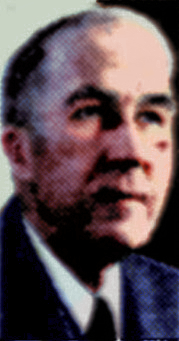The Pittsburgh Press (February 12, 1945)
U.S. tanks splinter enemy force in southern Manila into isolated pockets
MANILA, Philippines (UP) – The fortress of Corregidor in Manila Harbor where Gen. Douglas MacArthur’s Americans made their last stand against the Japs rocked today under the heaviest saturation bombing attack yet launched in the Pacific.
For nearly a week, the Jap anti-aircraft guns on the rocky fortresses have been silent, presumably knocked out by American bombs.
The terrific air attack, softening up Corregidor for an American landing, came as U.S. tanks and infantry columns splintered the Jap forces in southern Manila. The Japs were cut into scores of isolated pockets and infantry patrols were sweeping down burning streets to destroy them.
In the last 48 hours more than 500 bombing sorties have been flown against Corregidor and southern Bataan. Nine hundred tons of bombs have been dropped, 200 tons on Corregidor alone. In one attack
Hard-hitting armored units of the U.S. 1st Cavalry Division broke open the Jap defenses Saturday with two quick thrusts across the Pasig River on the east side of Manila. One column drove south toward Fort McKinley while the second wheeled westward to link up with doughboys of the 37th Infantry Division in the Pandacan District.
The sudden breakthrough promised to close out the bloody street battle for Manila in short order. After eight days of fanatical resistance, the Japs were breaking up into small suicide squads.
Probably the strongest remaining Jap positions were around Fort McKinley on the southeastern outskirts of the capital and in the old Walled City on Manila Bay.
The 1st Cavalry Division forced the Pasig River in amphibious tanks early Saturday, crossing just beyond the capital’s eastern outskirts. Advancing rapidly southward, the Americans reached Nielsen Airfield a mile southeast of the city limits and just north of Fort McKinley.
A few hours later, a second armored spearhead crossed the river a half-mile to the west, near the Santa Ana racetrack, quickly mopped up Jap resistance in the area and pushed westward to join up with the 37th Division.
Drive mile from river
The 37th Infantry Division’s advanced spearheads were already more than a mile south of the Pasig at some points and their right wing was reported moving against the main Jap strongpoint behind the massive stone walls of the Intramuros on the waterfront.
Elements of the U.S. 11th Airborne Division, meanwhile, were moving up along the shores of Manila Bay into the Jap rear. By Saturday night, they were reported north of Baclaran, two miles south of the city limits and about the same distance southwest of Fort McKinley.
Other units of the 11th Airborne Division were still locked in a blood struggle for Nichols Field, five miles south of Manila, where a strong Jap force had been cut off from the main garrison inside the capital. The Americans captured 10 eight-inch guns and two six-inch guns in the area Saturday after a hard fight.
Race toward coast
Almost 70 miles north of Manila, spearheads of the 6th Armored Division were well on their way to cutting Luzon in two with a dash overland to the island’s east coast. Two columns advanced well beyond Laur and Bongabon and were reported 20 miles or less from their objective – Baler and Dingalan Bays.
Northwest of the capital, other U.S. forces continued their methodical destruction of the Jap units trapped in the foothills of the Zambales Mountains overlooking Fort Stotsenburg. The Japs were well-entrenched in a network of rock caves, and the Americans were using airpower and artillery to the utmost in order to keep down casualties.
Jap broadcasts asserted that the Americans have lost more than 30,000 men in the month-old battle for Luzon, half of them killed, against Jap losses of 6,500 killed or wounded. Last week, however, Tokyo placed the American losses at about 11,200 men.
Strong forces of Liberator bombers hit Corregidor Island on Friday, and more than 70 attack bombers worked over the southern shores of Bataan Peninsula on the same day, bombing and strafing the enemy without opposition.
American PT boats ranged north of Lingayen Gulf to sink 20 coastal craft near San Fernando and La Union.
